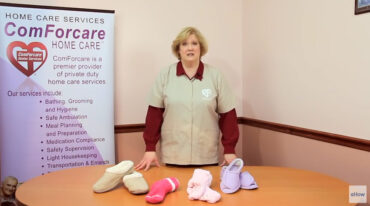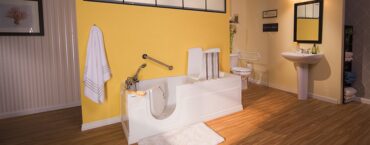It seems virtually no one wants to go to a nursing home, and most caregivers do not want to institutionalize a loved one. But even though you may be committed to home care and have no intention of utilizing the services of a nursing home, circumstances may arise that make institutionalizing your care recipient a necessity, not a choice. It is possible that after a stay in the hospital your care recipient may need a period of specialized care of the sort you can’t provide at home. Or you yourself may become ill and need to find a nursing facility that can care for your loved one while you recuperate. Perhaps your care recipient’s condition will progress to a point where you can no longer provide the level of care needed. At that point intermediate or skilled nursing care may be required on a long term or even permanent basis. If any of these things occur, you will find yourself, perhaps very unexpectedly, in the position of needing to evaluate and choose a nursing home.
A Decision with Heavy Emotional Components
Like so many issues in caregiving, the decisions surrounding this process involve very practical considerations overlaid with an emotional component. Feelings of sadness, relief, guilt, and a sense of having failed may all be experienced when the time comes to put a loved one in a nursing home. As time goes on, and the raw emotions of the moment subside, one of the most important areas of comfort will be knowing that you have chosen the right home for your care recipient.
Types of Care
It is impossible to choose a nursing facility without first determining the type of care your loved one needs. Not only will that information assist you in finding a home that provides the proper level of care, it will also be a major factor in determining what, if any, government aid (Medicare or Medicaid) your care recipient will be eligible for.
The three most common types of care are personal care, often referred to as custodial, intermediate, and skilled nursing. Custodial care means that residents need help with personal activities such as dressing, bathing, and eating. This type of care is essentially non-medical and is administered by aides rather than trained medical personnel.
Residents who need rehabilitative therapy and medications in addition to personal custodial care are candidates for intermediate care. Intermediate care is delivered by licensed therapists and registered or licensed practical nurses. When the level of disability is such that the resident is not able to care for him- or herself and may even be bedridden, skilled nursing care is needed. It is administered on the orders of an attending physician by licensed medical personnel.
Taking Stock: What Kind of Care Is Needed?
A good starting point for evaluating your care recipient’s health status is the list of activities of daily living (ADLs), which include bathing, dressing, eating, going to the toilet, mobility, and getting in or out of bed and other transferring situations . An additional list, the instrumental activities of daily living (ADLs), which include cooking, cleaning, shopping, taking medicine, and paying bills can also help give you an overall picture of your loved one’s abilities. And of course, consultation with the doctor, who will most likely have had considerable experience in nursing home placements, can prove invaluable.
Finances: What Can We Afford?
What Do We Need to Know About Basic and Supplemental Costs?
Nursing homes are expensive; $50,000 on average and so your choices may well be dictated by what financial resources are available. First, it is important to realize that Medicare only covers very specific types or combinations of care. Personal care without other necessary prescribed care is never covered. Medicare covers only 100 days in a skilled nursing facility; the first 20 are fully paid but you must contribute a co-payment for the remaining 80 days. If your care recipient’s stay is covered by Medicare, the facility you choose must be Medicare approved.
Medicaid does cover nursing home costs but you must meet strict financial guidelines to qualify. If you think your loved one might be a candidate for Medicaid coverage, it is wise to contact an elder care attorney, or other professional that can help you work out the details and apply for Medicaid-eligible certification. Make sure you understand the home’s daily or monthly rate; which basic services are covered in this rate; which cost extra; what your payment plan will be, and whether or not a deposit is required.
Choosing the Nursing Home: What to Look for
Your initial screening should provide you with a list of facilities that offer the type of care needed, are geographically convenient, are within your price range, and have available beds.
The next step is to arrange a personal inspection visit. Areas that you should inquire about
(some of these can be handled over the phone to save time during your on-site visit) include:
- Services. Does the home provide physical, occupational, or speech therapy; religious services; social activities; laundry service; television? Be sure to ask which of these are included in the monthly fee and which entail special charges. Surcharges can add several hundred dollars to your monthly bill, and you need to factor these costs into your financial assessment.
- Staff. Find out how many registered nurses are on the staff; how often the doctor visits; how many staff are on duty during the day and on the night shift and what is the ratio of staff to patients; whether dental care is provided in-house; whether a pharmacist or other trained person maintains and reviews medication records on patients; how much turn-over there is among the staff, and what arrangements have been made for ambulance service.
- Accreditation. If your care recipient qualifies (or may qualify in the future) for Medicare or Medicaid, make certain that the institution is certified by these programs. It should also be licensed by the state. Other accreditations, such as those from the Joint Commission of the
Accreditation of Hospitals (JCAH) may provide further assurance, but the first two are absolute necessities. Examine the survey reports that are mandated for each nursing home by federal law. The state health department must inspect each facility to see that it meets certain minimum standards and it issues a deficiency report detailing problems found. This report should be displayed at the home. If it is not, ask to see it. If the facility can’t seem to find the report while you are there, you will want to note that fact. However, don’t be swayed solely by the number of deficiencies. A home that has numerous small, easily correctable deficiencies may be much more desirable than one which has fewer, but far more serious ones.
As You Tour the Facility Consider These Areas
- Safety. Are there sufficient smoke detectors; emergency exits; wheelchair ramps; call buttons; hand and guardrails in bathrooms and bedrooms?
- Livability. Do the current residents look clean and cared for; are they engaged in varied activities, or are they simply sitting and staring? Are there opportunities to sit or recreate outdoors? Are physical restraints excessively used? Are the rooms of a decent size, with space for the residents’ belongings? Are they bright and cheerful? Can the residents decorate their rooms to some degree? Is there adequate privacy? Are the common rooms clean and welcoming or is there a pervasive, unpleasant odor? Does the staff treat residents respectfully and kindly? Does the staff radiate a generally pleasant and cheerful demeanor?
- Nutrition. Is the food nutritious and appealing? Are fresh fruits and vegetables available?
Are snacks served? Is the menu varied; are special (low salt or low cholesterol) diets available?
Does the staff feed those who can’t feed themselves? Do the current residents say they like the food?
Tips from Those Who Have Been There
- If you can afford it, try using a nursing home for short term stays to determine how well they meet your family’s needs.
- The nursing home decision is a very emotional and stressful one. Seek out counseling either during the decision-making process or immediately after.
- If your care recipient is mentally fit and younger than typical nursing home residents, try to find an institution that is, if not geared to a younger population, at least a place where there is some interaction with people of a similar age and activities that are planned with younger people in mind. Check out the facility’s bulletin board. It can give you a good idea of what activities are actually being offered.
- Plan ahead.
A difficult as it is, if you know your care recipient may be a future candidate for a nursing home, do some of the research ahead of time, when you are not feeling stressed about a time limit. This can increase your chances of finding the best possible facility.
The Intangible Component
You do need to have a list of practical considerations when you’re looking at a nursing home, just as you do when you are considering any other type of housing decision. But the answers on a checklist aren’t necessarily the whole story. Sometimes you find a place that’s not as beautiful or as good on paper as some of the others, but you can just tell it has heart.
By Suzanne Mintz, National Family Caregivers Association






